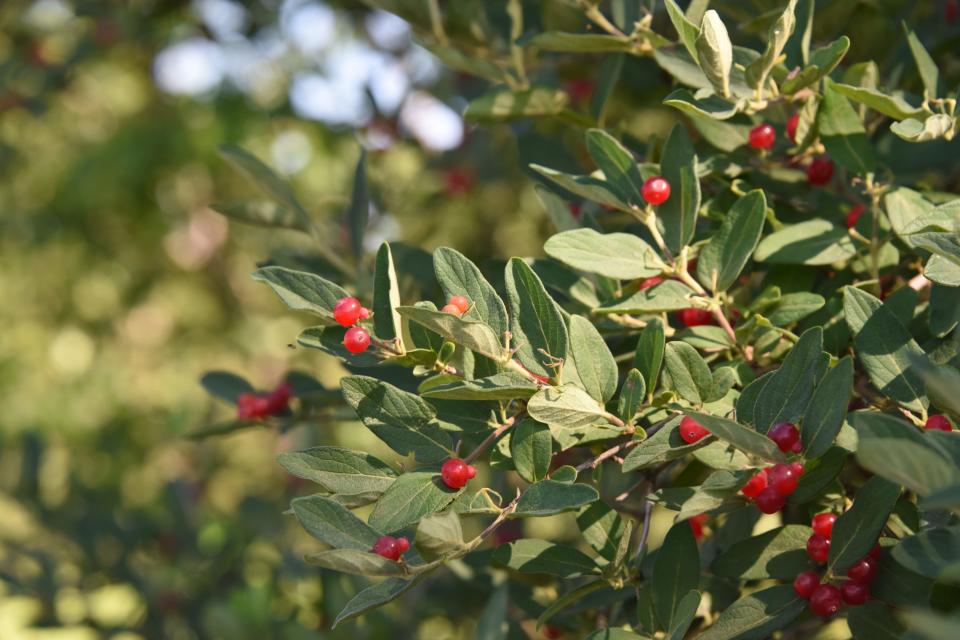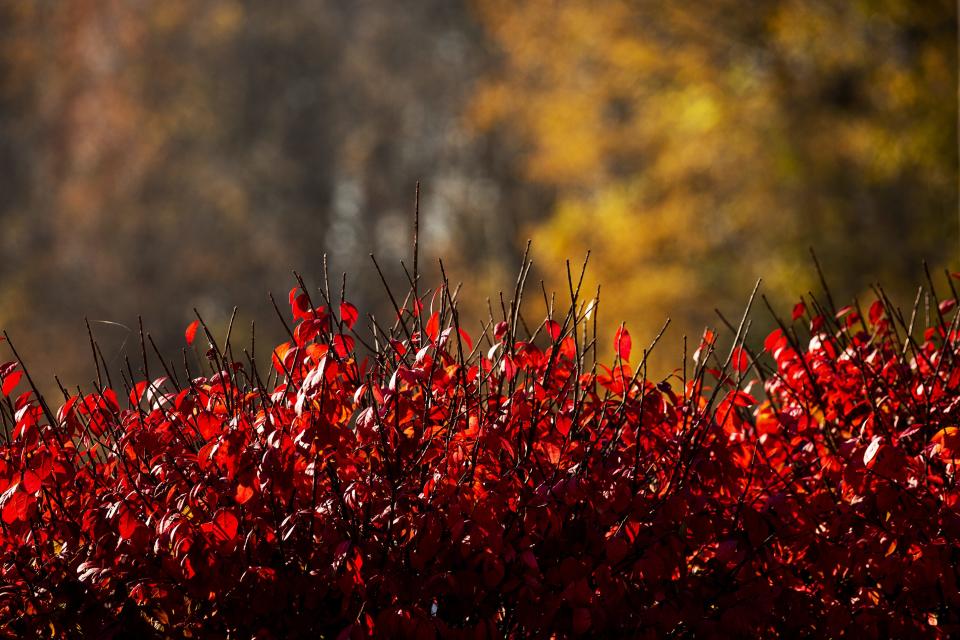Here are 3 tips to try to get rid of invasive plants in your garden

As you might imagine, when you write a garden advice column, your inbox can become a source of unending entertainment.
"How long should I compost cricket manure?" (Turns out this is actually a thing...)
"How do I direct more sun to my shady vegetable garden?"
"Can you tell me if Russian sage is native to Kentucky?"
Some can make you scratch your head, but others pose great questions whether intentional or not.
One topic that seems to be omnipresent in my email inbox is how to manage invasive plants in "natural" landscapes. A quick online search makes it quite clear that there is all kinds of information out there on how to get rid of this invasive plant or that one. The challenge, though, is what to do once you've removed the offending plants.
So here’s the scenario: You have a tenth or half an acre, or maybe 2 or 3 or 5 acres. When you moved in a few years ago, the property was overrun with amur honeysuckle (Lonicera maackii), autumn olive (Eleagnus umbellata) and burning bush (Euonymus alatus) — all well-known and wildly invasive thugs — and all choking out the understory layer in the woods. You've spent the last couple of years dutifully ridding your property of every last bit of those nasty plant things.
You may likeSo, what is hardscape landscaping? Here are 3 hardscape ideas for your garden
And this is where the questions start:
What spray can I use to keep the invasive plants from coming back into the garden?

Once the invasive plants are removed, you can bet the soil has what we refer to as a "healthy seed bank." The years of the honeysuckle, burning bush and autumn olive (or insert any other favorite invasive plant name) growth on your site means that there are likely a ton of seeds sitting just below the surface and waiting for their chance to shine.
The only way to beat the invasive seed bank would be to use a pre-emergent herbicide. Pre-emergents work by killing off the young, tender seedlings right after germination and before they can get well established. The problem with this approach is one, most invasive shrub species are not well controlled by run-of-the-mill pre-emergent herbicides, and two, there are no species-specific pre-emergents. You'll end up suppressing the regrowth of any of the natives that are also represented in the soil seed bank.
What can I plant to keep the invasive plants from coming back?

A good gardener knows that nature abhors a vacuum. Whether it’s a storm-caused blowdown in the middle of dense woods or tearing out a few overgrown old shrubs, open, freshly disturbed land with a bump in available sunlight and a little moisture and you have the recipe for the instant explosion of germination and growth. Basically, remove the competition and off they go, whether native or exotic.
You may likeHow often should you water your tomatoes? Here are 5 tomato growing, care tips
Farmers know that when growing a corn or bean crop, weed control is most important and most difficult up until what they call the closed canopy stage of the crop ― the point where the desired crop plants take up most of the sunlight and help suppress weeds growing up from below.
The challenge for our woodland invasive species management is that most of these invasives are highly shade tolerant. They are incredibly well-adapted to low light conditions and are vigorous growers. In fact, if you think about it, the very reason they are so invasive, with the term "invasive" typically defined as a plant that spreads into an established natural area and displaces the existing native vegetation, is that they are actually more competitive in that situation than the existing native species.
There are plenty of locally native, understory species that can be planted in these situations ― spice bush (Lindera benzoin), eastern wahoo (Euonymus atropurpureus), strawberry bush (Euonymus americanus) are a few favorites ― but they are timid growers compared to the most aggressive invasives and simply aren’t up to the challenge on their own.

So if we can’t spray something to keep the invasives from coming back and we can’t plant something to outcompete the invasives, what’s left?
What do I need to look for to spot invasive plants in my garden?
The answer is that we need to stop thinking of these situations as "natural landscapes" and think of them more as gardens. Now don't go all nuclear on me here ― I’m not suggesting we obliterate all woodlands and replace them with English cottage gardens. Rather I’m suggesting we change our approach to maintaining these spaces.
Good garden management uses a combination of practices to effectively target weeds and get the most out of the plants we want there. We can do the same in landscapes that are less gardeny and more woodsy and as you’ve probably guessed by now, that process is definitely not removing the invasives and then sitting back, gin and tonic in hand, and just enjoying your cleaned-up woods for the next 10 years.
You may likeFrom potting soil to mixed planting, 5 tips to get the most out of your container plants
Just like any garden that was overrun with weeds, once you clean it up, you know that's just the beginning. You have to be diligent and watch day-to-day for the next cycle of weed seedling emergence ― and then stand ready with your favorite hoe, appropriately gloved hands or other favorite implements of horticultural destruction. And the same goes for your cleaned-up woods.
Regular walks through your newly cleaned up woods will keep you tuned in to what’s emerging from the ground, give you a chance to weed out the germinating invasives, and maybe even encourage the new desirable plants ― whether planted by you or emerging from the seed bank.
You might even fertilize those new plant babies with a little composted cricket manure!
Paul Cappiello is the executive director at Yew Dell Botanical Gardens, 6220 Old Lagrange Road, yewdellgardens.org.
This article originally appeared on Louisville Courier Journal: How to get rid of invasive plants in your Kentucky garden

